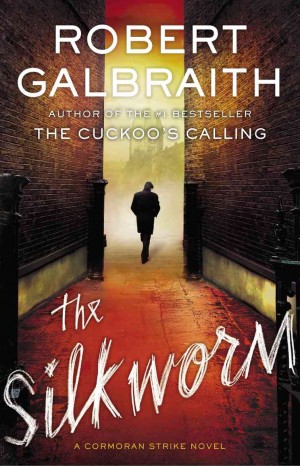 At first glance, Cormoran Strike sounds like a Frankenstein’s Monster of character qualities: imaginatively named, dedicated private investigator, missing half of one leg due to military service in Afghanistan, unwanted son of a rock star, armed with an uncanny memory, physically intimidating but internally sensitive. In the hands of a lesser writer, Strike would be a cardboard cutout. Luckily, J.K. Rowling can really write.
At first glance, Cormoran Strike sounds like a Frankenstein’s Monster of character qualities: imaginatively named, dedicated private investigator, missing half of one leg due to military service in Afghanistan, unwanted son of a rock star, armed with an uncanny memory, physically intimidating but internally sensitive. In the hands of a lesser writer, Strike would be a cardboard cutout. Luckily, J.K. Rowling can really write.
Coming of the world-bending success of the “Harry Potter” books, Rowling had set off to write more adult stuff, with her 2012 domestic drama “The Casual Vacany” debuting to a lukewarm reception. What most people didn’t know was that Rowling was writing an altogether different book: a gripping detective novel starring Strike, but under a different name. “The Cuckoo’s Calling” came out in 2013 under the pen name Robert Galbraith to critical acclaim and middling sales. The middling sales part changed forever when it was leaked (against Rowling’s wishes and later requiring a legal settlement) that the book was by the “Potter” author. Sales were no problem after that.
Rowling returns with her maimed hero, again writing under her alias of Robert Galbraith with “The Silkworm: A Cormoran Strike Novel” (Mulholland Books, New York, 2014, 455 pages). Rowling’s name is notably absent from the book’s front cover (Her real identity is on the bottom of the back cover in small print). Rowling has been busy, as she recently wrote a new “Harry Potter” story, posting it on her Pottermore.com website.
In the meantime, she slides seamlessly back into whodunit mode with “The Silkworm.” After having solved the murder of model Lula Landry, Strike is now famous and having trouble dealing with the unwanted attention. His interest is piqued when a badly reviewed novelist goes missing and he plunges into the backstabbing, gossipy world of publishing. But when the novelist is found with his guts missing, mutilated by acid and hanging from a decrepit house’s ceiling, Strike’s case jumps to the front page. Strike is convinced that the writer’s mousy, aloof widow is innocent, but the police believe otherwise. Can Strike find out the real killer with the cops working against him and a mysterious woman trying to kill him? Could the secret really be found in the dead novelist’s last, unpublished book? “What was this mania to appear in print,” Strike wondered. “But writers are a savage breed,” someone would tell him later.
“The Silkworm” could easily be a detective novel written by any of the genre’s best-selling craftsmen, but Rowling brings something different to the book. Her vibrant, imaginative prose contrasts the often dark and disturbing aspects of the case. Some of her sentences are downright whimsical, something markedly unusual for the genre. In fact, “The Silkworm” is easily the most cheerfully described book involving a grisly murder out there.
In particular, Rowling continues to strike with her protagonist with “The Silkworm.” The growling, grizzled Strike makes for an entertaining, emphatic and intelligent lead character, relentlessly driving towards the murder’s solution. Rowling continues to build on Strike’s personality and on his Girl Friday relationship with another winning character, Strike’s personal assistant Robin.
As with any detective book, the reader’s interest will rely on the complexity of the case, and this literary murder mystery is appropriately engaging and twisted. “The Silkworm” is well-crafted and brightly bounces beyond the genre’s expectations, a killer book about a killer book. It also seems that Rowling will continue to write these books under her chosen pseudonym. With this inspired reinvention, Rowling really has found a deadly rhythm with these new books, making “The Silkworm” something truly hers, and readers won’t be surprised to find themselves repeatedly welcoming back to their bookshelves both Cormoran Strike and J.K. Rowling going undercover as Robert Galbraith.
Available in paperback from National Book Store.















































